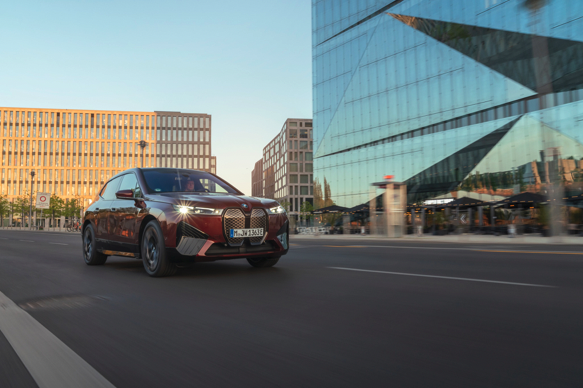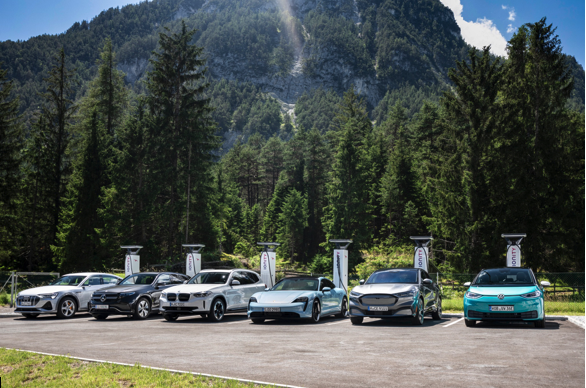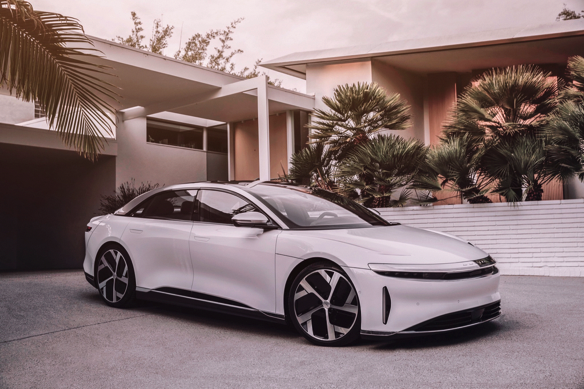Belgium. Unquestionably one of the world’s great shrines to chocolate, beer and waffles, it’s nevertheless not the first country you think of when the talk turns automotive. And yet in the small hours of the evening last Thursday, it was a decision made in the Belgian capital of Brussels that now stands to define a large part of automotive progress for the next decade – and indeed, for the decades beyond that.

After months of high-stakes negotiation between European lawmakers, industry executives and powerful automotive lobby groups, the EU’s ‘Green Deal’ supremo Frans Timmermans announced the terms of an agreement that will shape how – and how quickly – the auto industry manages the shift away from its one-hundred-year northstar: the internal combustion engine.
By 2035, he declared, Europe will end the sale of carbon-emitting vehicles. That is to say, in a mere 13 years from now, or roughly the equivalent of two-and-a-half model cycles, no manufacturer will be permitted to sell a vehicle with an internal combustion engine in the European market. Crucially, the ban will include the increasingly popular plug-in hybrid models that have proven an effective interim step for automakers seeking to meet the current EU emissions regulations – by 2035, they’re history.
So too, at least in Europe, is the prospect of e-fuels; a concept championed by Porsche among others, whereby hydrogen and atmospheric CO2 are combined to create a ‘green’ synthetic fuel that can be used in a conventional combustion engine. Despite heavy lobbying from key members of the German opposition and a number of automakers heavily invested in this technology, the 2035 ban ultimately makes no provision for this technology.
Instead, in handing down the decision, Timmermans made it clear that the new deal seeks to ‘lock-in’ electrification as the clear path for manufacturers to pursue. “European carmakers,” he said, “are already proving they are ready to step up to the plate, with increasingly affordable electric cars coming to the market.” The thinking now is that the 2035 decision gives them the certainty of a clear time target to complete a transition that is – essentially – already underway.

No matter how inevitable the decision may have seemed to lawmakers, though, there’s no overstating its significance to the global automotive landscape – not least to those in Europe whose employment depends in one form or another on the car as we know it today. In countries such as Germany, France and Italy, where the industrial base supporting automotive production is particularly broad and deep, opposition to the ruling was unsurprisingly trenchant.
Yet the argument is now stronger than ever that without this regulatory “shove in the back”, a habitually conservative European car industry would simply revert to type and dawdle their way to electrification, whilst Asian – notably Chinese – competitors establish unassailable dominance in the European vacuum that’s left behind.
Of course, one can also argue that whilst the EU has set a pace and direction, it’s not the be all and end all for the global automotive market. There is still, for example, the quite independent US market, where no such blanket mandate for the end of combustion-engine sales exists. Instead, the current North American administration has set a somewhat more moderate target that would see pure EV and, crucially, plug-in hybrids, make up 50% of new vehicle sales by 2030.
Yet even then, the more piecemeal, state-by-state nature of that market should not be forgotten. Notably, in California, the local Air Resources Board (CARB) now seeks to phase out all ‘light-duty’ combustion-engined vehicles by 2035. In this there are echoes of regulations past – the state of California, and the CARB specifically, has consistently led the push for carbon and air pollution reduction innovations, including the US’ first exhaust gas emissions standards for CO2, NO2 and diesel particulates in the 60s, 70s and 80s respectively; the first mandated catalytic converters; and the first zero-emission vehicle targets in the 1990s.

Inevitably, other US states – and indeed other global markets – followed suit with similar regulations and technology, proving just how potent California lawmakers can be in setting next-generation automotive standards internationally. Little wonder that the three most prominent dedicated-EV manufacturers in the world – Tesla, Rivian and Lucid Motors – all hail from California.
Be it Europe, Asia or America, though, the relevance of these recent regulatory pronouncements to the automotive technician is obvious and stark. No longer can it be said that the timeline for the electric vehicle transition is unclear – with concrete horizons like 2035 now laid down, automakers the world over have the certainty they need to discard the old robes of the combustion engine and chase the EV rabbit with all haste.
Indeed, in a rather telling twist designed to all but ensure a successful EV revolution, EU regulators have actually decided to reduce the stringency of the proposed 2025 round of emissions standards for petrol and diesel vehicles. Why? Well, this major concession to Europe’s automakers is based on the argument that precious engineering resources should not be wasted on further refining combustion engine technology, which will, by 2035, be banned altogether anyway. Perhaps this decision, more than any other, truly sounds the death knell for the traditional ICE car as we know it.
This fact alone should represent a clarion call for every automotive technician. As manufacturers and governments tip increasingly vast sums not just into powertrain development, but also battery production facilities and continent-wide charging infrastructure, the result will be compelling products that are more affordably-priced and far more widely available. The take up rate of EVs, even in more traditional sectors like the US full-size pickup market, will accelerate with what may seem surprising haste – evident in the immense popularity of Ford’s all-electric F-150 Lightning, Rivian’s R1T and the incoming Chevrolet Silverado RST.

In the UK and Europe, the electric Tesla Model Y now regularly features in the top-ten best-selling car lists – emblematic of the broader statistical shift that has seen electrified vehicles grow their overall 2022 market share to more than 40%, out-selling diesel vehicles in both markets for a second year in a row now. Globally, then, the EV game is on, and it’s on for real.
So, how should technicians respond to the reality of these big market shifts in the next five to 10 years? Put simply – with an open mind and a readiness to learn and adapt. The good news is that not only does the market now have far greater certainty than ever before, but there is also a wealth of information and data available to assist you with the transition.
Accessible and affordable products like Autodata’s new integrated video training offer you a means to boost your knowledge on topics like hybrid powertrains, battery technology and electric vehicle systems, quite unlike the traditional training methods of years gone by. And in an industry as beset by rapid change as ours is, it seems only fitting that you base your future success on training technology that’s as modern and up to date as every technician will need to be in the years that lie ahead.